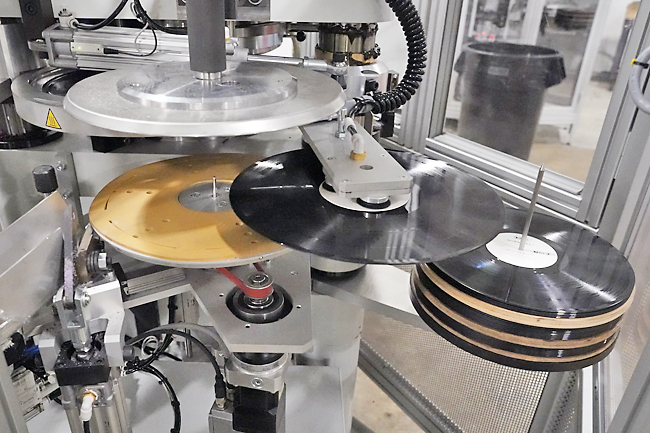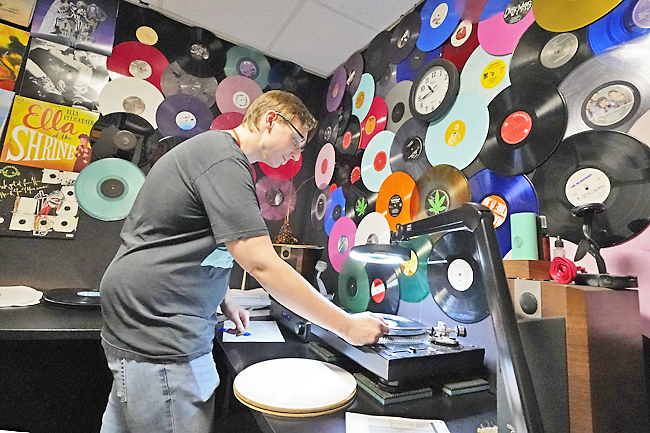David Sharp
AP – The arrival of the compact disc nearly killed off record albums, with vinyl pressing machines sold, scrapped and dismantled by major record labels.
Four decades later, with resuscitated record album sales producing double-digit annual growth, manufacturers are rapidly rebuilding an industry to keep pace with sales that reached USD1 billion last year.
Dozens of record-pressing factories have been built to try to meet demand in North America – and it’s still not enough.
The industry “found a new gear, and is accelerating at a new pace”, said CEO and chairman Mark Michaels of United Record Pressing, the United States’ (US) largest record producer, in Nashville, Tennessee.
Demand for vinyl records has been growing in double-digits for over a decade and mass merchandisers like Target were bolstering their selection of albums just as the pandemic provided a surprising jolt. With music tours cancelled, and people stuck at home, music lovers began snapping up record albums at an even faster pace.
Record album sales revenue grew a whopping 61 per cent in 2021 – and reached USD1 billion for the first time since the 1980s – far outpacing growth rates for paid music subscriptions and streaming services like Spotify and Pandora, according to the Recording Industry Association of America.


Record albums nearly spun into oblivion with sales overtaken by cassettes before the compact discs brushed both aside. Then came digital downloads and online piracy, Apple iPods and USD0.99 downloads. Streaming services are now ubiquitous.
But nostalgic baby boomers who missed thumbing through record albums in their local record stores helped to fuel a vinyl resurgence that started about 15 years ago.
It coincided with the launch of Record Store Day to celebrate indie record stores, said Larry Jaffee, author of Record Store Day: The Most Improbable Comeback of the 21st Century.
These days, though, it’s more than just boomers.
A younger generation is buying turntables and albums – and cassette tapes, too – and a new generation of artistes like Adele, Ariana Grande and Harry Styles have been moving to vinyl, Jaffee noted.
In Pittsburgh, taxi driver Jamila Grady is too young, at age 34, to remember the heyday of record stores.
But she finds records to be irresistible. She created wall art from some of the album covers from nearly 50 albums she’s bought since 2019, starting with Lemonade by Beyoncé. She acknowledges it’s an indulgence since she already listens to music through Soundcloud, Apple Music and Pandora.
“For record players, there’s something so beautiful about taking the record, putting it on the payer, and dropping the needle,” she said.
Manufacturers had to start nearly from scratch.
The major labels shuttered their plants long ago, but new ones are coming online. Record makers launching over the last 10 to 15 years include Toronto-based Precision Record Pressing, Memphis Record Pressing, Cleveland’s Gotta Groove Records and Kansas’ Quality Record Pressing.
Jack White of White Stripes, opened his own vinyl pressing plant, Third Man Pressing, in 2017 in Detroit, and pleaded with the major record labels to re-open manufacturing facilities.
There are now about 40 plants in the US – most of them smaller operations – but challenges remain.
Nationwide, backlogs are six to eight months because of growing demand, and supply chain disruptions of raw materials, including vinyl polymers, have caused problems, Michaels said.
It’s not easy to launch a new pressing plant because there are only a handful of companies – none in the US – that make record-pressing machines. Those machines are backordered, as well.
People can debate the sound quality but it comes down to an emotional reaction, not technical specifications, said multi-Grammy winner Bob Ludwig, who created Gateway Mastering Studios in Portland, Maine.
A friend who listened to Ludwig’s remastered version of Queen’s Night at the Opera called it “stunning” and “electric”.
“I love the vinyl experience. All of it. To me, there is an electrifying sound when I play records that I don’t feel from digital,” independent A&R executive Mark Mazzetti said, who worked for Sting, Janet Jackson and others at A&M Records.
No one knows the ceiling for record growth because of the constrained supply, said vice president for finance Chris Brown at Bull Moose Records, a record store chain in New England.
New releases often fail to meet demand, and reorders take even longer, leaving little capacity for lesser-known eclectic albums, he said. “Part of the fun of collecting records is being surprised,” he said. “But midlevel stuff doesn’t get printed, or there’s a long wait.” Record producers gather this week in Nashville for their annual trade event called Making Vinyl.
People in the business are excited about the growth, and it’s almost like “printing money” for manufactures as sales soar to new heights every year, Making Vinyl President Bryan Ekus said.
No one knows how long the run will continue, so there’s a sense that “we should make hay while the sun shines”, Ekus said.
In Nashville, United Record Pressing launched in 1949 and never stopped producing records.
It’s currently in the midst of a USD15 million expansion that will triple its capacity in the middle of next year.
Michaels can’t help but to wonder how long the double-digit growth can be sustained, but he said he’s optimistic about the future.
It’s both heartwarming and good for business to see high schoolers and young adults showing an interest in records, he said.
“I believe in music and I believe in the importance of music in people’s lives. I don’t think that changes,” he said.






